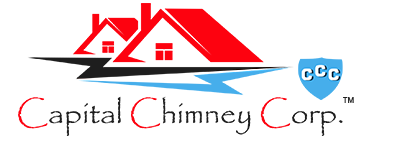Regular fireplace cleaning helps your chimney function safely and efficiently. Knowing how often to sweep it is crucial to keep it in excellent condition. Each flue is different, though, so to answer that question, you need to understand the signs of a dirty chimney.
Signs You Need A Professional Chimney Cleaning
There many ways you can tell if your chimney is dirty and in need of cleaning.
- Soot drops down into your fireplace.
- You recently moved into the house.
- There’s evidence of animals living in your chimney: noises, droppings, excess debris, dislodged brickwork, etc.
- Strong, foul, or smoky odors come from your chimney when it’s not in use.
- Fires don’t burn as intensely as before.
- You recently changed or upgraded your heating system, stove, or fireplace insert.
- It takes more effort to start and maintain a fire.
- The fireplace damper, walls, and surrounds are black and oily.
- Fires generate more smoke than usual.
You likely use your fireplace more in the winter than at other times of the year. You can prepare now for the next cold season by writing a reminder in your calendar to have your chimney inspected and swept before winter returns. If you haven’t used it in a long time, it’s worth scheduling a cleaning with a professional chimney sweep before you use it again.
Define Regular Chimney Cleaning
There are several factors that influence how often you should clean your fireplace.
- Type Of Wood Burned
- Age Of Fireplace
- Type Of Chimney
- How Often You Use Your Fireplace
- How Efficiently It Burns Wood
- Moisture Content Of Firewood
- Type Of Fuel (Wood, Coal, Gas, Etc.)
Ideally, you should schedule an inspection and ask the technician if your chimney could use a sweep too. Inspections often reveal structural problems that could be hazardous if not repaired.
The Dangers Of Creosote
Creosote is a gummy substance that builds up inside your flue whenever you burn firewood. Cleanings should keep pace with creosote build-up. Thus, the faster it builds up, the more often you should clean it.
The Chimney Safety Institute of America (CSIA) recommends sweeping your fireplace once creosote, soot, and other residue has built up to 1/8 of an inch. Chimney experts agree that this is enough residue to cause a chimney fire. Relatively few fires can produce this creosote, so rarely using your fireplace isn’t a good excuse to avoid cleaning it.
Furnace Flues & Gas Fireplaces
Furnace flue systems also need regular cleaning. Even new furnaces can cause problems if they’re connected to flues designed for older models. Most homeowners choose to get their furnaces inspected and cleaned in the same visit as their fireplace and stove.
A gas fireplace should also be inspected regularly by a qualified engineer. You don’t need to worry about soot and creosote accumulation since you’re not burning wood. But, debris and animal nests can still clog them, and they’re vulnerable to water, ice, and impact damage.
Schedule Your Chicago Fireplace Cleaning Today
Staying up-to-date with your chimney cleaning will help prevent future disasters. Like many of life’s problems, the longer you leave a dirty fireplace uncleaned, the bigger headache it’ll become. If you’re in the Chicagoland area and you’re having problems with your fireplace (or it’s been over a year), book an appointment with Capital Chimney Corp today.



